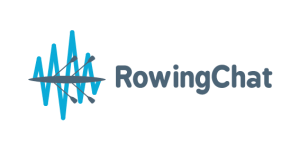Balance is lost as we age. How can rowers learn balance – in the boat, in life and physical balance?
How to balance a quad scull.
Timestamps
03:00 Balance as you age. Typically it changes around age 50.
There is a loss of muscle mass – it affects co-ordination like walking and neuro-muscular aspects like hearing and vision as well.
04:45 Balance can be trained and maintained.
Keep your muscles in good condition. Notice changes in your balance.
05:30 standing balance – it’s more challenging.
Exercises to test and train your balance
– Stand on one foot and time how long you can do this.
– Incorporate into rowing training. 10 ankle circles per leg during your land warm up daily.
– Toe touching in a star shape exercise. Tap toe in front and behind moving in a circle.
– Yoga tree pose.
– Walk on a 2×4 plank.
– Tai chi and yoga have postures to train
08:30 Sitting balance.
Use a swiss ball /physio ball.
Sit with hips and knees at 90 degrees. Arms to side in a T position. Lift one leg and extend it. Does it challenge your balance? Get comfortable doing rhis. Then raise both legs off the floor.
11:14 Try a V-sit, sit on the floor raise legs as well as torso. Balance on sit-bones. Can you balance?
13:00 How to balance a quad scull.
First check your set up in the boat.
Then are your oars going in and out of the water at the same time?
Lastly, your skill handling the oars needs development and practice.
Put pressure into the pins.
17.00 ‘Transitioning land to boat – getting into the boat.
One leg squats help train strength.
Also concentric & eccentric motion.
Lower your weight to sit is a good progressive exercise.
21:00 Why a 2x is easier to balance than a single scull.
The boat is wider – it sits in the water with more surface area of the hull under the water.
A narrow beam is more sensitive.
23:00 Tension kills boat speed
Want easy live streams like this? Instant broadcasts to Facebook, YouTube, LinkedIn. Faster Masters uses StreamYard: https://streamyard.com/pal/5694205242376192
n
